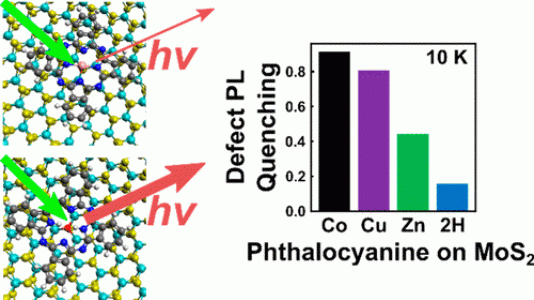
Scientific Achievement
This study demonstrates metallophthalocyanines (MPc) quench defect-related photoluminescence in MoS2 monolayers. The MPc complexes stabilize dark, negatively charged defects over luminescent neutral defects via an electrostatic local gating effect.
Significance and Impact
The results suggest attractive routes for photo-luminescent manipulation and could have applications in flexible electronics, sensors, photovoltaics, catalysts, and neuromorphic computing.
Research Details
- Modeling and experimental results demonstrate the control of defect-based excited-state decay pathways via molecular passivation.
- First-principles computations were performed using Carbon, a high-performance computing cluster in CNM.
Work was performed in part at CNM.
DOI: 10.1021/jacs.1c07795
Argonne National Laboratory seeks solutions to pressing national problems in science and technology. The nation’s first national laboratory, Argonne conducts leading-edge basic and applied scientific research in virtually every scientific discipline. Argonne researchers work closely with researchers from hundreds of companies, universities, and federal, state and municipal agencies to help them solve their specific problems, advance America’s scientific leadership and prepare the nation for a better future. With employees from more than 60 nations, Argonne is managed by UChicago Argonne, LLC for the U.S. Department of Energy’s Office of Science.
The U.S. Department of Energy’s Office of Science is the single largest supporter of basic research in the physical sciences in the United States and is working to address some of the most pressing challenges of our time. For more information, visit https://energy.gov/science.